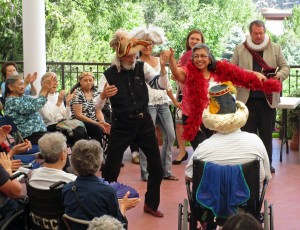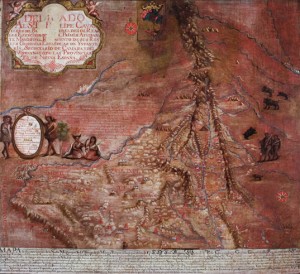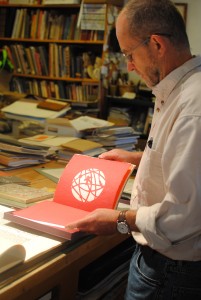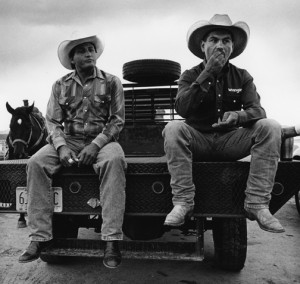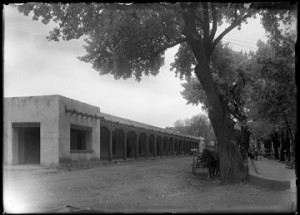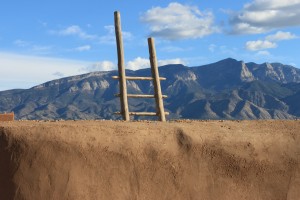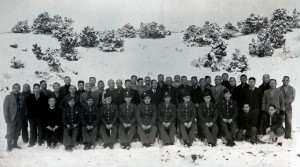
Military sons visiting their interned fathers and friends at the Santa Fe Internment Camp. Photo courtesy Shinoda Family Collection.
During World War II, Santa Fe was the site of one of the nation’s largest Justice Department internment camps. It primarily housed Japanese immigrants, among them the Rev. Tamasaku Watanabe. On Sunday, November 15, at 2 pm, Watanabe’s granddaughter, Dr. Gail Y. Okawa, speaks on a brain-twisting aspect of that heartbreaking period: Even as our government locked up Japanese residents over fears of their supposed disloyalty, their own children put on soldiers’ uniforms to defend the nation.
“Compounded Ironies: Japanese Internee Fathers, American Patriot Sons” is a free-with-admission lecture in the New Mexico History Museum auditorium. (Sundays are free to NM residents.)
Tensions between the United States and Japan were brewing well before the December 7, 1941, bombing of Pearl Harbor. Officials with the War and Justice Departments were working together to identify the leaders of Japanese American communities. As a minister, the Rev. Watanabe made one of their lists. Within hours of the Pearl Harbor attack, he was arrested and eventually exiled from Hawai`i. He and others ended up at the camp that today is the site of Santa Fe’s Casa Solana neighborhood. Between March 1942 and April 1946, 4,555 men of Japanese ancestry were held there. (The Army also operated an internment camp in Lordsburg.)

